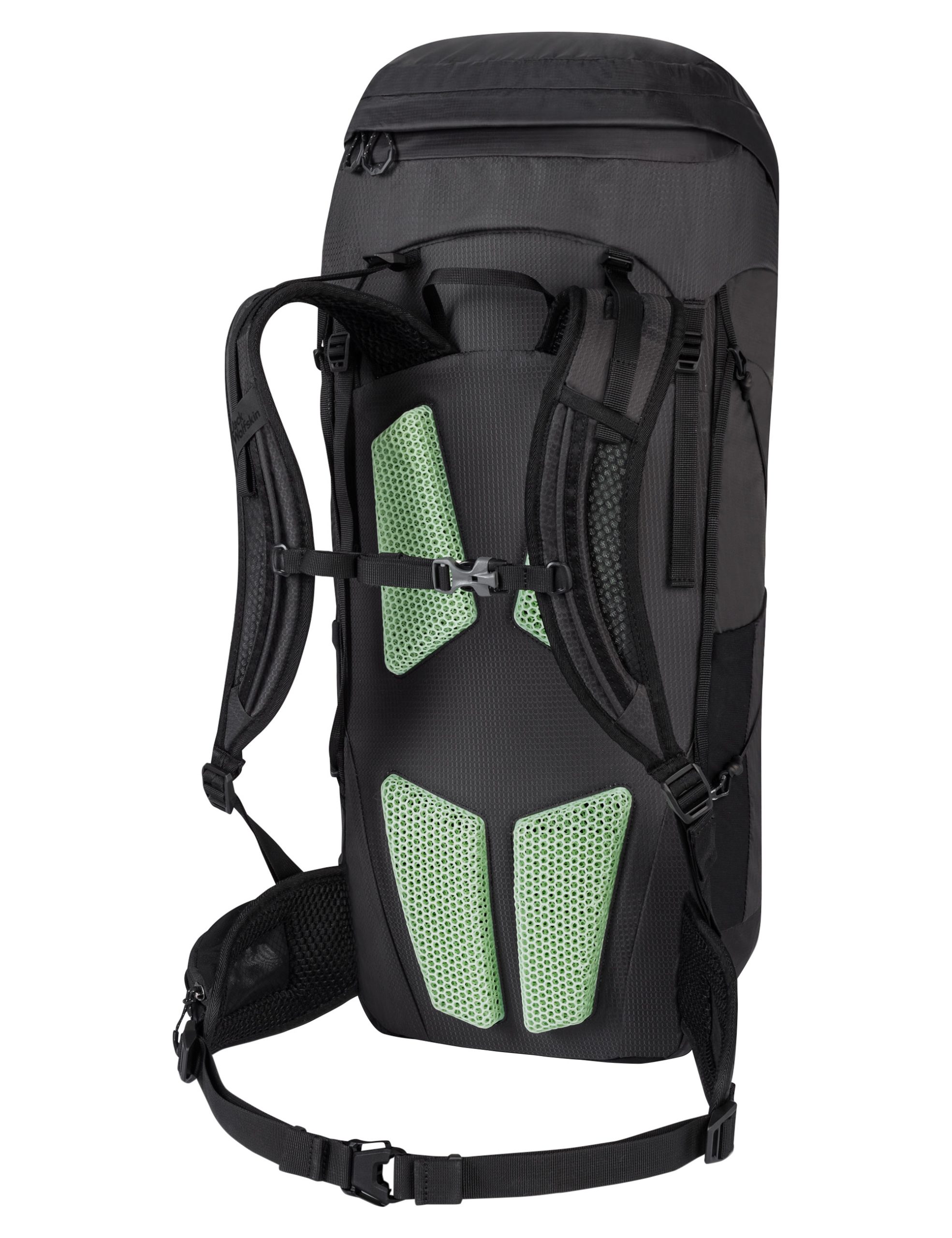Outdoor gear manufacturer Jack Wolfskin has improved the weight, durability and ventilation of its hiking packs with additive manufacturing.
Developed in partnership with plastics technology company Oechsler and 3D printer manufacturer Carbon, the firm’s new 3D Aerorise Carry System uses four independent 3D printed panels to deliver a lightweight, multi-zone body fit capable of reducing back temperatures by up to 5°C.
“Comfort, load control and ventilation are age-old challenges in pack design,” said Magdalen Hamel, Category Manager, Equipment at Jack Wolfskin. “The technology presented in Aerorise benefits hikers on the trail and takes the industry in a new direction.
“The design is impressive from an engineering perspective and further supports our belief that together, in cooperation with partners, we can make a notable difference in sustainability commitments and performance equipment.”

3D printing performance equipment
Additive manufacturing is being increasingly utilized within the performance sports sector due to its ability to deliver greater customization, enhanced designs, and reduce waste and lead times during the production process.
For instance, 3D printing and scanning technologies have been deployed to create custom-fitted aerodynamic skinsuits for Olympic cyclists, develop more ergonomic grips for Korea’s archery team, and helped the Chinese speed skating team to two gold medals during the 2022 Beijing Winter Olympics.
Another well-known application of 3D printing within the performance sports sector is adidas and Carbon’s jointly developed 4DFWD midsole, which was commercially launched last year and worn by a number of athletes at the 2022 Tokyo Olympic Games.
Regarding the performance hiking scene, Carbon recently teamed up with fellow backpack manufacturer Osprey to create a 3D printed lumbar for its new pack series. The Fitscape Lumbar is designed to deliver superior mechanical properties while reducing material waste.

The 3D Aerorise pack
Now, Jack Wolfskin has developed its own backpack enhanced by 3D printing. The 3D Aerorise Carry System is the latest in Jack Wolfskin’s series of innovative collaborations, and leverages additive manufacturing to decrease waste, improve customization, and deliver a range of design benefits.
The firm worked with Oechsler and Carbon to design and manufacture the system, which consists of four 3D printed panels on the shoulders and lower back of the pack. The panels, the design of which is only possible via 3D printing, are made of an open-cell structure with thousands of struts to enhance ventilation, while lattice patterns provide vertical and horizontal firmness for comfort and load distribution.
The system is designed to eliminate common pain points around weight, durability and ventilation for hiking backpacks, due to the multi-zone fit made possible by 3D printing. The body of the Aerorise pack is constructed from 100% recycled 70D polyamide and has a carrying capacity of 40 liters.
“Additive manufacturing is changing the outdoor equipment and sporting goods world,” said Matthias Weisskopf, General Manager at Oechsler. “Working with Jack Wolfskin allowed us to further develop the Aerorise hiking backpack and solve problems that weren’t achievable until recent years.
“Aerorise is the start of a new movement in improved product development through 3D design.”
Debuting in Spring 2023, the 3D Aerorise carry system will be available in three models: 3D Aerorise 40L, 20L, and 30L roll-top pack options. Once available to the public, the pack will demonstrate the successful transition of additive manufacturing technology often used in other areas of performance activity, such as running shoes, to the hiking pack category.
“Carbon’s integrated consumer materials, software and 3D printers accelerate the time-to-market of products at scale – from idea to production,” said Andreas Tulaj, Vice President Sales Europe at Carbon. “Using Carbon’s Idea-to-Production platform, Jack Wolfskin has improved the performance of the 3D Aerorise 40 backpack and worked with Oechsler to develop components that would not have been developed and brought to market so quickly using conventional manufacturing methods.
“When brands like Jack Wolfskin turn to 3D printing, it’s a strong sign that additive manufacturing continues to enable innovation.”
Subscribe to the 3D Printing Industry newsletter for the latest news in additive manufacturing. You can also stay connected by following us on Twitter and liking us on Facebook.
Looking for a career in additive manufacturing? Visit 3D Printing Jobs for a selection of roles in the industry.
Subscribe to our YouTube channel for the latest 3D printing video shorts, reviews, and webinar replays.
Featured image shows the 3D printed 3D Aerorise Carry System. Photo via Oechsler.



